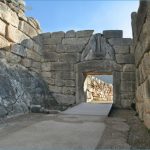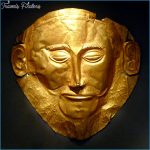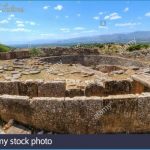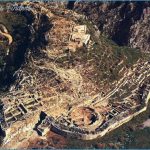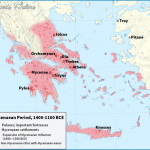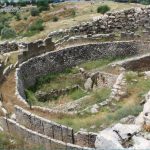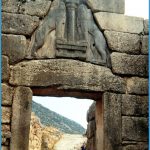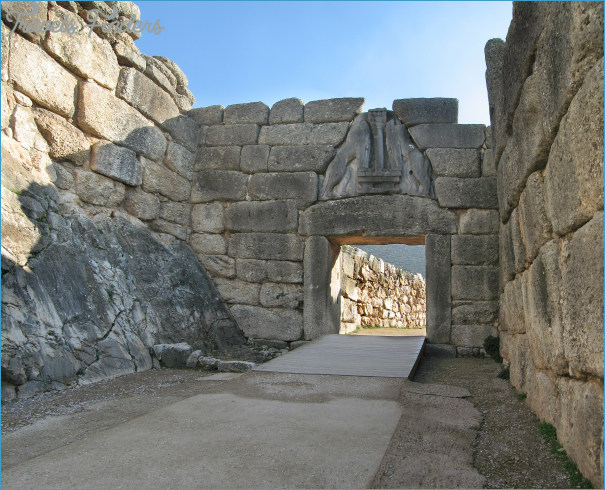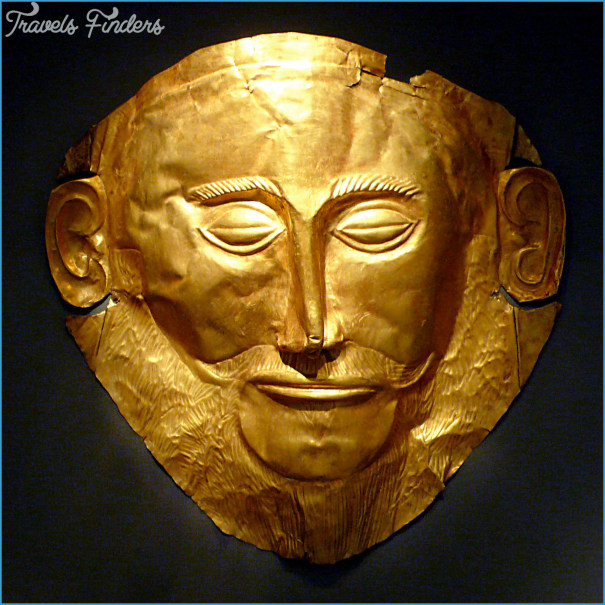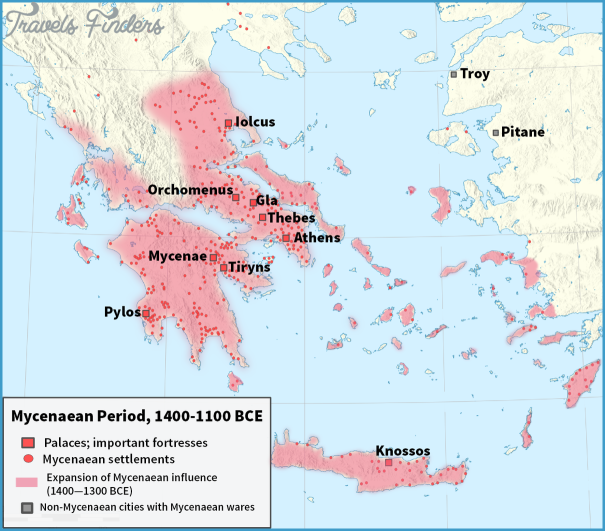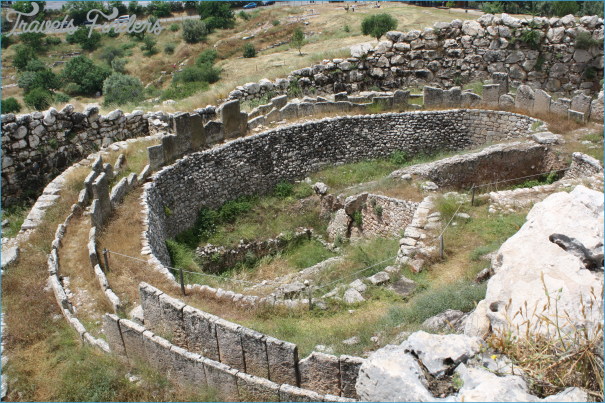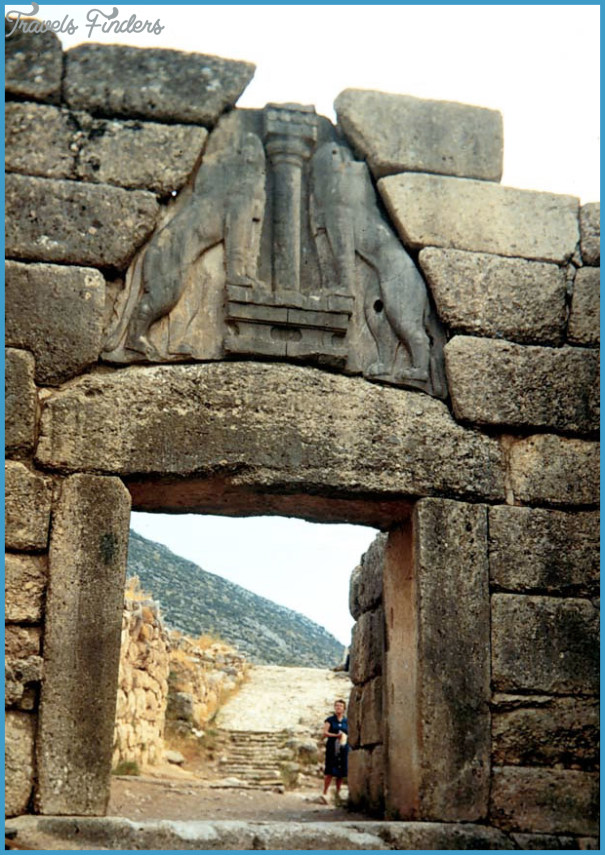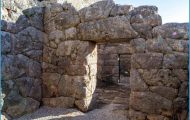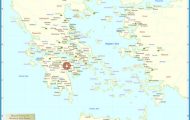Inhabited from the fourth millennium bc, Mycenae attained increasing importance and wealth in the second millennium Funerary goods discovered in Grave Circle A, a royal cemetery later incorporated within the circuit of the citadel’s walls include solid gold death masks, jewelry, cups and banqueting paraphernalia, as well as inlaid daggers, whose blades are decorated with scenes of aristocratic pursuits including lion hunts. On stone stelai, men with spears are shown hunting from chariots.
Around 1500 bc tholos tombs were constructed in the neighbouring hills. These were outstanding feats of engineering: high corbelled chambers with dressed and fitted stone, approached by long dromoi. Around 1250 bc Mycenae’s citadel walls were rebuilt with massive blocks, while the palace was enlarged and enhanced. A monumental gateway was constructed and on a triangular slab above the lintel were carved two lionesses flanking a single pillar, their forepaws resting on an altar. Possibly the earliest coat of arms in Europe, its power is palpable, despite the fact that the creatures heads have not survived.
Mycenae in History & Today Photo Gallery
The main gate at Mycenae, built around 1250 BC, is surmounted by two lionesses or griffins flanking a column,
Bronze Age Mycenae traded widely throughout the Mediterranean and beyond, with ties to Egypt and the Hittite Empire. Linear B tablets testify to a tightly bureaucratic society. Mythology may reflect reality in suggesting that Mycenae was the most important of all Greek settlements for much of the fourteenth and thirteenth centuries bc, eclipsing the power of Knossos and taking over the Cretan empire in a period which many historians call the Mycenaean Age.
In the twelfth century bc Mycenae’s power collapsed, and around 1200 bc the citadel and palace were destroyed by fire. It never recovered. A population of around 30,000 people dwindled to almost nothing. Attempts at resettlement were only partially successful. Eighty Mycenaeans joined the Greek army fighting the Persian invasions, but in 468 bc Mycenae was destroyed by neighbouring Argos. It was again inhabited in the third century bc, when a theatre was built over one of the now-forgotten tholos tombs, but again fell into such disrepair that Pausanias saw only ruins:
Parts of the circuit wall remain, including the Lion Gate. They say this was built by Cyclopes, who also built Tiryns. Among the ruins is the spring called Perseia and subterranean chambers, treasuries where Atreus and his sons stored their wealth. Atreus grave is there, as well as graves of those who returned from Troy, who were killed at the banquet by Aegisthus.
Pausanias account of Agamemnon’s death at a banquet is confused, and his identification of the tholos tombs as treasuries is wrong. The error persists – the largest tholos is still signposted ‘The Treasury of Atreus’. Mycenae’s romance attracted many travellers wishing to soak up its atmosphere. One first-century ad poet wrote:
There is but little of the age of heroes left to see – though still some ruins jut up from the plain.
As I passed by, I recognized poor, suffering Mycenae, now quite abandoned. Not even goats go there. A herdsman showed the place to me. He was an old man, and he said: ‘This was the city rich in gold, which once the Cyclopes built.’
In 1876 Heinrich Schliemann, inspired by Homeric legend and wishing to prove it true, began excavations at Mycenae. They have continued ever since.

